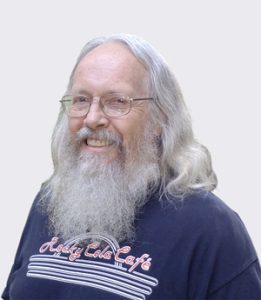Pioneer Memories: Emily Lanterman
I’ve often said that it were not for our old local newspaper, The Ledger, we would know little about CV’s history. Grace Carpenter, the paper’s publisher, had a great love for our history and she spent a lot of the newspaper’s ink on printing the memories of our local “old-timers.” I recently came across the mother lode of these memories, collected in 1938. In the next few weeks, I’ll be featuring these writings and interviews. (I’ll interject my own comments in parenthesis.)
We start with Emily Lanterman. Jacob and Amoretta Lanterman bought and subdivided La Cañada in 1875. Their son Roy became a doctor in 1893, and moved to Los Angeles. Dr. Roy Lanterman was handsome and popular, and he soon married the equally beautiful and popular Emily. They honeymooned at the Hotel Coronado in San Diego then returned to Los Angeles. They visited La Cañada in a buckboard wagon, traveling from Pasadena and crossing the Arroyo on the old iron bridge, the footings of which can still be seen, just inside the Devil’s Gate Dam. Here’s what Emily wrote about her first impressions of La Cañada in 1895:
“We drove through fields of golden poppies (Altadena), across the Arroyo Seco bridge, shaded by towering sycamore trees that were rooted in the mossy banks of a mountain stream below, a paradise of trout-filled pools. Through a riot of bloom on the first mesa (La Cañada High School area), then up the steep narrow road hugging the hillside. Suddenly the way was blocked by a gypsy caravan drawn by donkeys with gaily-bedecked riders. Our startled horse attempted to kick the dashboard in and back over the embankment.
“At last! The second mesa (St. Francis High School area), a breath of incomparable pure mountain air, and a view of a long shady lane between rows of waving eucalyptus trees that was Michigan Avenue (today’s Foothill Boulevard) in the heart of the foothill valley, our La Cañada of 43 years ago.
“Against the skyline, giant pine trees on Sister Elsie Peak (Mt. Lukens, which is quite bare today), which guarded the water canyon (Pickens Canyon) where years before Theodore Pickens had felled many stately monarchs to furnish the Mullaly Brick Co. of Los Angeles with fuel. (Theodore Pickens may have cut down a few trees, but the main timber industry was carried out by Chinese crews hired by various LA brick companies.)
“Dr. Lanterman pointed out the old Soledad Grade that Los Angeles capitalists had started hoping to complete a stage road through the Sierras (San Gabriels), but had abandoned. Twelve miles were completed however, part way on good road, part pack trail. Later we drove up the grade many times, as today many travel in the same canyon on Angeles Crest. (That abandoned wagon road can still be faintly seen in a few places, just above the Angeles Crest Highway.)
“I found most of the families in the valley to be interesting, kindly people, some prosperous, but mostly struggling ranchers, for a drought was upon the land and a threatening depression alarmed everyone. (La Cañada was poorer than La Crescenta in 1895, the opposite of today. The “Great Drought of 1893 to 1904” affected Southern California, and the “Panic of 1893” depressed economies worldwide until 1897.)
“The camps of the Mexican woodchoppers could be seen on the hillsides and in the canyons, and it became the chief work of the ‘King’s Daughters’ to which every woman belonged, to provide the destitute Mexican families with clothing.” (Bands of woodcutters lived in camps on the Verdugos, San Rafaels and in the Verdugo Canyon, providing fuel for Los Angeles. The “Kings Daughters” was a faith-based charitable organization started in 1886 by a Methodist minister’s wife.)
Emily Lanterman lived with her husband Roy in Los Angeles where his practice was. Trouble followed Roy and he found himself several times on the wrong side of the law. Emily was his rock, and stood beside him through all his travails. In 1915, they decided to move back to La Cañada. It was then they built the grand Craftsman home that is today the Lanterman Museum.

president of the Historical
Society of the Crescenta Valley
and loves local history.
Reach him at lawlerdad@yahoo.com.
